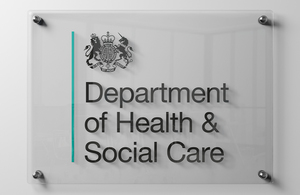New ambulance performance figures published for the first time
New figures showing how well ambulance trusts treated patients and what the results were have been published for the first time today.

New figures showing how well ambulance trusts treated patients and what the results were have been published for the first time today.
The data, which follows the recent publication of A&E quality indicators, was ordered by Health Secretary Andrew Lansley to give patients and the NHS a more informed view of the quality of ambulance services.
The ambulance clinical quality indicators measure more than just the ambulance response times, looking more broadly at the overall quality of care and results for patients.
Time is still measured as it is a significant risk factor for treating patients, but it is no longer the only factor. The response time targets for the most seriously ill patients remain the same. For other less seriously ill patients, timeliness is measured in a more clinically relevant manner, for example, the time for a qualified healthcare professional to arrive at the scene.
The new quality indicators data show that:
• 90.8 per cent of all patients eligible for primary angioplasty following a heart attack received the treatment within 150 minutes.
• 66.2 per cent of suspected stroke patients, who were assessed face to face, arrived at a hyperacute stroke centre within 60 minutes.
• 34.4 per cent of all calls nationally were successfully resolved without transport to an accident and emergency department.
However, the data also show that there is variation between different regions. Publishing this important information will highlight areas where the NHS can make improvements to patient care.
Responding to the statistics, Health Secretary Andrew Lansley, said:
“Transparency is at the heart of our plans to modernise the NHS. We know that it can be a powerful tool to help improve services, foster innovation and empower patients and clinicians.
“The data published for the first time today show that there is variation in the results for patients across the country. By making this information available we are giving the NHS the tools to identify areas where they can improve and take action.
“Patients should be able to expect a 24/7 accessible and safe emergency care service. I expect all ambulance trusts, commissioners and the wider NHS to look at the data for their region and work towards reaching the levels of the best.”
The publication of the ambulance figures follows recent figures illustrating the success of the Government’s transparency drive on mixed-sex accommodation. Since December, when data were first collected, breaches have fallen by 90 per cent in the space of eight months.
All the measures were developed by Peter Bradley, the National Ambulance Director, working with other clinicians including Professor Matthew Cooke, the National Clinical Director for Emergency Care.
Professor Matthew Cooke, National Clinical Director for Emergency and Urgent Care said:
“Publishing patient outcomes is vital in order to identify areas in need of improvements across the whole emergency care system.
“The new ambulance quality indicators offer an opportunity to ensure that we always strive to improve services for patients. It also provides patients with crucial information about their local services.”
ENDS
NOTES TO EDITORS
1. The full data for the ambulance clinical quality indicators can be found on the Department of Health website.
2. For more information, please contact the Department of Health press office on 020 7210 5221.